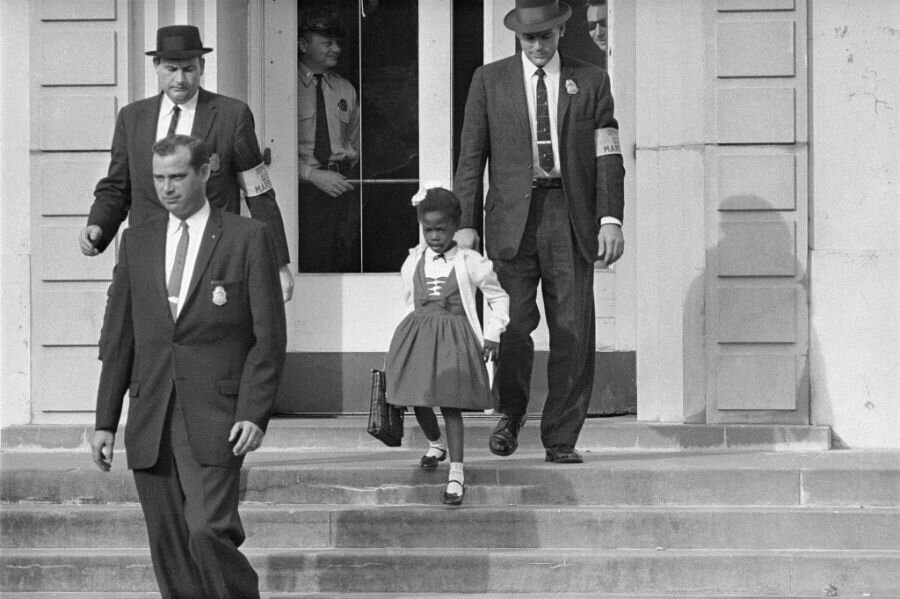Civil rights pioneer: 'You almost feel like you're back in the '60s.'
Loading...
School-integration pioneer Ruby Bridges will be reunited with a younger version of herself at the unveiling of a statue in her honor Friday afternoon in New Orleans. Exactly fifty-four years ago, as a six-year-old, she strode bravely into the William Frantz Elementary School as the first black child to attend an all-white elementary school in the city.
“Ruby Bridges is an American hero: In the face of really violent opposition, this young girl took steps to ensure that the schools would be integrated,” says Richard Kahlenberg, a senior fellow at The Century Foundation, in Washington.
More than 400 guests are expected for the event at the renovated school building, now home to Akili Academy charter school. Among them will be her white teacher and a US marshal who escorted her into the school.
The statue commissioned by the Ruby Bridges Foundation “honors the power of children,” and includes a row of books whose spines feature the names of children who have impacted history, says Kacie Fuselier, manager of communications for Crescent City Schools, which operates Akili.
But the celebration is also an occasion to question why Ms. Bridges’ legacy has to some degree given way to the resegregation of schools in the United States, along a combination of racial and economic lines.
“The sad thing today is that few education leaders are championing Ruby Bridges’ cause,” Mr. Kahlenberg says. “Almost all of education reform is about trying to make separate but equal work.”
The populations of many inner-city schools are more than 90 percent students of color, and often have high concentrations of poverty. But there are ways to promote integration, which lead to much strong outcomes for students from poor backgrounds, Kahlenberg says, because it helps improve overall conditions and the retention of skilled teachers.
"How did we integrate schools back in the 1960s? If those people did it back then, I can't understand why we can't do it today for the betterment of a community or for a society," Ms. Bridges said in an interview with the Associated Press. "Kids really don't care about what their friends look like. Kids come into the world with clean hearts, fresh starts," she said. "If we are going to get through our differences, it's going to come through them."
Students at the K-7 Akili Academy study the story of her efforts to integrate the schools.
In the children’s book Bridges authored, “Through My Eyes,” she recounts what it was like to walk through mobs of screaming white parents, and to see them take their children out of school, leaving her alone with her teacher.
“At the time, I knew little about the racial fears and hatred in Louisiana…. Young children never know about racism at the start. It’s we adults who teach it,” she writes.
And today, between racist comments made by powerful people and the tensions that flared in Ferguson, Mo., “you almost feel like you’re back in the ’60s,” she told the Associated Press.
Material from Associated Press was used in this report.






